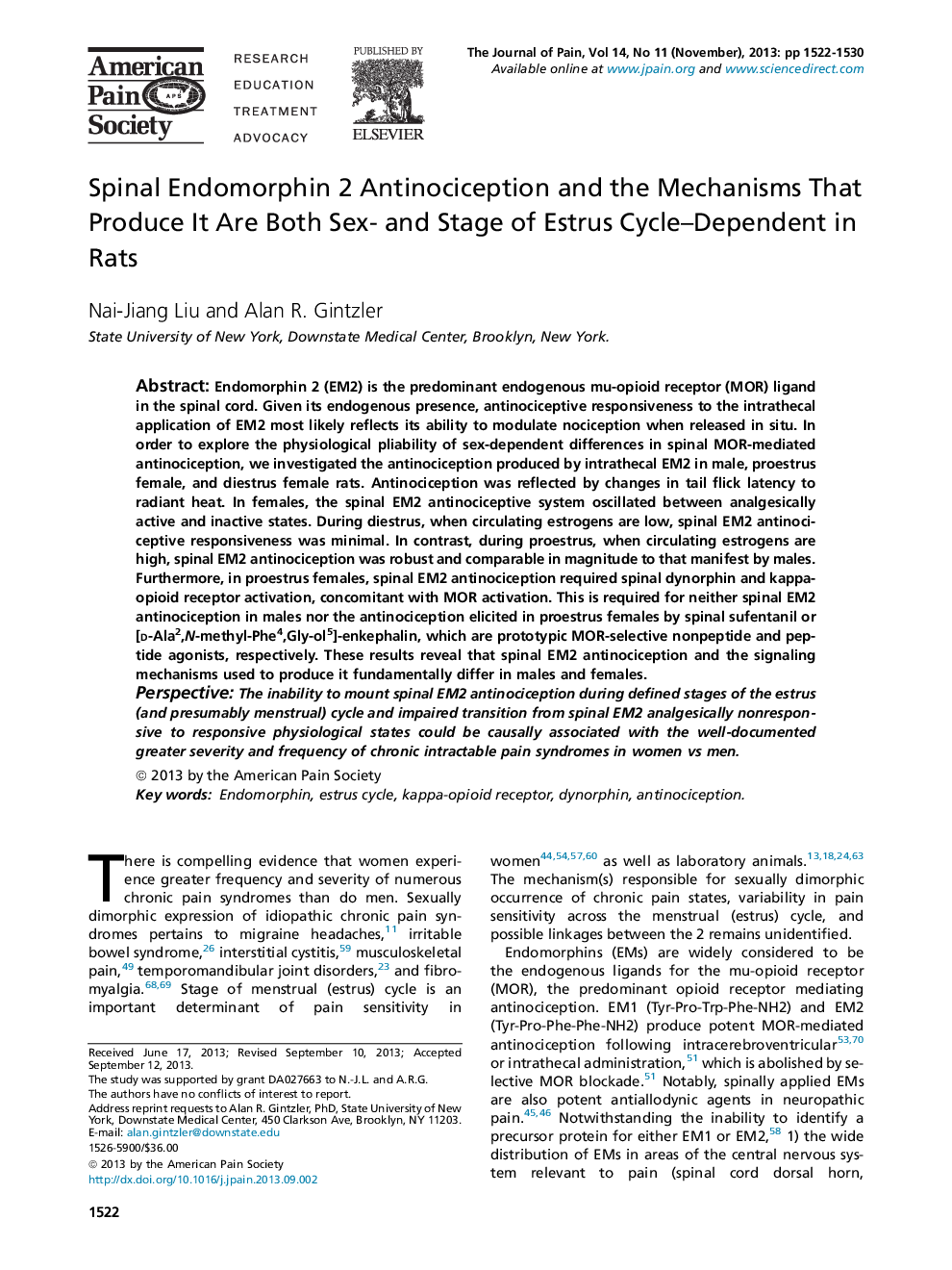| Article ID | Journal | Published Year | Pages | File Type |
|---|---|---|---|---|
| 5877799 | The Journal of Pain | 2013 | 9 Pages |
Endomorphin 2 (EM2) is the predominant endogenous mu-opioid receptor (MOR) ligand in the spinal cord. Given its endogenous presence, antinociceptive responsiveness to the intrathecal application of EM2 most likely reflects its ability to modulate nociception when released in situ. In order to explore the physiological pliability of sex-dependent differences in spinal MOR-mediated antinociception, we investigated the antinociception produced by intrathecal EM2 in male, proestrus female, and diestrus female rats. Antinociception was reflected by changes in tail flick latency to radiant heat. In females, the spinal EM2 antinociceptive system oscillated between analgesically active and inactive states. During diestrus, when circulating estrogens are low, spinal EM2 antinociceptive responsiveness was minimal. In contrast, during proestrus, when circulating estrogens are high, spinal EM2 antinociception was robust and comparable in magnitude to that manifest by males. Furthermore, in proestrus females, spinal EM2 antinociception required spinal dynorphin and kappa-opioid receptor activation, concomitant with MOR activation. This is required for neither spinal EM2 antinociception in males nor the antinociception elicited in proestrus females by spinal sufentanil or [d-Ala2,N-methyl-Phe4,Gly-ol5]-enkephalin, which are prototypic MOR-selective nonpeptide and peptide agonists, respectively. These results reveal that spinal EM2 antinociception and the signaling mechanisms used to produce it fundamentally differ in males and females.PerspectiveThe inability to mount spinal EM2 antinociception during defined stages of the estrus (and presumably menstrual) cycle and impaired transition from spinal EM2 analgesically nonresponsive to responsive physiological states could be causally associated with the well-documented greater severity and frequency of chronic intractable pain syndromes in women vs men.
